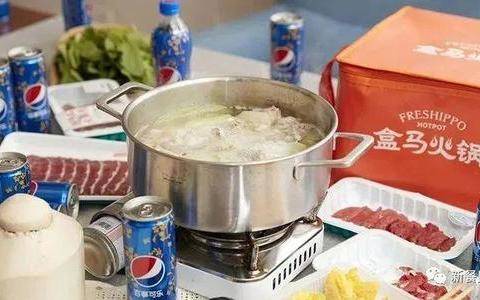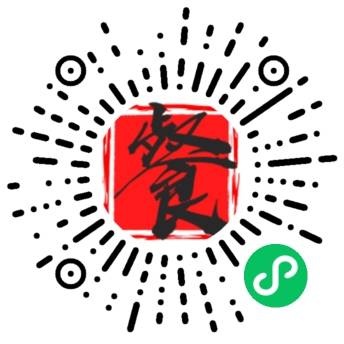▲Reply number “3” to join in F&B WeChat Group
Source: Mintel
1.Packaged Planet
What’s happening in 2018?
Consumers have long considered packaging as often unnecessary, and ultimately as just waste to be disposed of. But that misconception is now changing. A focus on package innovations that extend food freshness, preserve ingredient fortification, and ensure safe delivery is increasingly benefiting consumers on a global scale. Indeed, 50% of US grocery shoppers agree that the right packaging can help reduce food waste.
In an environment where 56% of Brazilians are actively trying to reduce food waste at home, rather than simply highlighting packaging materials and technology, converters must promote package benefits and brands need to spotlight those attributes on-pack to become catalysts for changing consumers’ perceptions of packaging for the better.
Where next?
The Food and Agriculture Organization of the United Nations estimates that 1.3 billion tons of food is wasted globally each year, with consumers in Europe and North America throwing away between 95-115 kg of food per person. With consumers concerned about this growing waste mountain, and shoppers seeing the cost of this waste on their wallets, people are now actively seeking solutions. Indeed 61% of Canadian fruit and vegetable buyers say they would be interested in packaging that keeps food fresh longer, indicating the importance of this issue across the globe. Brands need to act now, exploiting on-pack communication tools to educate consumers on the benefits packaging can bring, from extending shelf life of food to providing efficient and safe access to essential products in developed and underserved regions of the world.
2. rEpackage
What’s happening in 2018?
Much of the conversation among brands, converters, and package designers about online shopping and e-commerce is currently focused on, and driven by, Amazon. Free from the supply chain restrictions of the brick-and-mortar retail giants, Amazon is working to minimise “touches” in the supply chain, maximise the brand experience for consumers, and optimise packaging SKUs (stock keeping units).
Online shopping is becoming more widespread around the world and is near ubiquitous in markets like the UK where 91% of consumers say they shop online. Much of the popularity stems from convenience as over half of Chinese consumers aged 20-49 who shop online say it is fast (53%) and saves time (51%). Now is the time for brands to consider how packaging can alleviate, if not eliminate, consumer frustration with over-packaged and even under-branded goods sold online and delivered via e-commerce.
Where next?
With e-commerce sales forecast to reach $4 trillion globally by 2020, representing nearly 15% of total global retail sales, according to eMarketer, brands must consider when, not if, they will enter the online retail and e-commerce packaging fray. Packaging that safely delivers products through the e-commerce supply chain is only part of the equation, with opportunities for material optimisation and improved sustainability.
While online shopping’s key advantage is convenience, consumers expect more from their favoured brands. When designing packaging to be viewed online, and transit packaging to be opened upon delivery in the home, the experience of e-commerce packaging must reflect consumer expectations from shopping with that brand in-store.
3. Clean Label 2.0
What’s happening in 2018?
Though consumers are more informed than ever, they may reject brands if they feel overloaded with information, which leads to questioning of provenance, authenticity, and transparency. Indeed, 39% of French consumers feel that excessive information on food and drink packaging can make it hard to trust a brand.
Every package must create an emotional reaction for consumers at the point of sale. Where mass brands often fear stepping outside a category’s design status quo, craft brands often pare back too far and become candidates for de-selection due to being too far outside consumer’s comfort zones of marketing expectation. The “essentialist” design principle bridges the divide between not-enough and justenough of what is essential for consumers to make an enlightened and confident purchasing decision.
Where next?
Consumers are more likely to trust brands when messaging and claims are succinct and easy to understand. On-pack communication that eliminates excess information and design elements to help consumers focus on key product qualities or package functionality can lead to greater customer engagement. Brands must bring the next generation of clean label to packaging design to provide a moment of calm and clarity for shoppers in an increasingly hectic retail environment.
4. Sea Change
What’s happening in 2018?
Sourcing packaging material from sea waste highlights the greater sustainability issue, but is not a solution in and of itself. Reducing the likelihood of packaging waste entering the sea in the first place offers greater potential for reducing the impact of plastic packaging on the ocean environment. Committing to the use of recycled content in all packaging can help drive the circular economy, reducing ocean plastic by ensuring an efficient route for packaging from the consumer back to the producer. Brands such as Coca-Cola are leading the way when it announced in 2017 that it would increase the amount of recycled plastic in its bottles to 50% by 2020. This aligns with eco-conscious consumers such as the 36% of Australians who prefer products that are sold in ecofriendly packaging.
Where next?
It is estimated by the Ellen MacArthur Foundation that by 2050 there will be more plastic in the sea than fish. With lobby groups pointing the finger at packaging, brands are right in the firing line. Concerns over safe packaging disposal will increasingly colour consumers’ perceptions of different packaging types and impact shopper purchase decisions. Only by communicating that a brand is working towards a solution will this growing barrier to purchase be overcome. Collecting waste plastic from the sea to recycle into new packaging can raise consumer awareness but won’t solve the problem. In order to keep plastic out of the sea, a renewed effort towards the circular economy is needed to keep valuable packaging material in use.
5. rEnavigate
What’s happening in 2018?
Shopper habits are changing, both in frequency of shopping and in how consumers navigate the store. Large weekly shopping excursions are being replaced with more frequent, smaller trips. Young shoppers are increasingly “shopping the periphery”, visiting the fresh and chilled aisles around the store perimeter and turning their backs on processed, ambient, and frozen offerings in the centre of the store. One third (34%) of US consumers aged 18-34 shop for centre store foods most often at grocery stores compared to three in five (62%) of those aged 55 and older. Supermarkets are now fighting back by refreshing store layouts to reflect this new mission-based shopping style. Now is the time for brands to respond and leverage packaging to refresh the centre-of-store experience and earn loyalty among Millennial shoppers.
Where next?
With younger consumers avoiding some areas of the store altogether, packaging needs to work harder in order to meet their specific needs and desires and to communicate this fact at the point of purchase. Such packaging features as transparent materials can create a feeling of openness and trust, as well as aligning with Millennials’ interest in fresher, healthier foods. Contemporary design, recyclability, or unique shapes can also draw in younger consumers. Shelf-stable foods are more likely than chilled or fresh to be associated with attributes such as time-saving, helpful, and good value. Packaging can strengthen these assets to make shopping the store centre as appealing as the burgeoning perimeter to younger consumers.
Tips: * Have brilliant articles to contribute? Feel free to contact Wilbur Zhu (WeChat ID: aotokuer).
/ Related Articles /
Mintel Announces Five Key Chinese Consumer Trends for 2018
Mintel Announces Five Global Food and Drink Trends for 2018
Marking Awards 2018
Initiated by FBIF,Marking Awards(click to read more) is a food and beverage packaging design contest organized in Shanghai since 2016 while targets the global. With the most prestigiousjury team,we welcome all the stakeholders in the F&B package value chain to join in, get a better idea of package performance and trends in China’s market, test if your design would work here and get ready to beinspired by the deep-rooted Asian culture. To download the full MA2018 Guide, please reply“MA Guide” in the dialog box of FBIF’s Wechat official account.
/WeChat Groups /
Add Ada Chen (ID: 15021839607)to join inCEO, CMO, Chief R&D Officer, Functional Foods,FSMP,Infant Food, Dairy, Alcohol,Catering,Beverage,Snacks,Marketing,R&D,Packaging,Design,etc. WeChat groups.
▲follow us and”Sticky On Top“
原创文章,作者:网络转载,如若转载,请注明出处:https://www.qiyu88.com/187977.html














